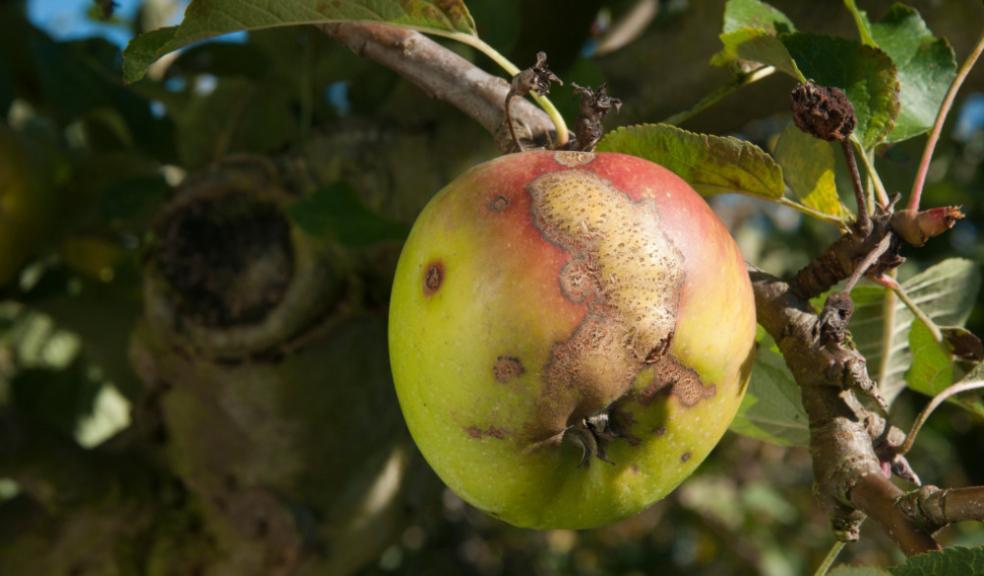
Are your apples looking mouldy or diseased? Here’s how to prevent more damage
So, you’re harvesting your autumn apples to find that the crispy crunch has been replaced by a mouldy mess, maggots have infested the fruits or scabs have formed on the outside.
Here are a few of the things which may have happened, and how you can prevent them in future…
1. Codling moth
If you’ve noticed maggots crawling within the fruits or simply the telltale holes, these are generally the larvae of the codling moth, which have burrowed through to the core. The holes lead to secondary rots, which can happen quickly.
Andrew Salisbury, RHS principal entomologist, advises: “Put up pheromone traps in your tree. The pheromones release the scent of the female, which attracts males in, and will give you an indication of numbers, but doesn’t usually give any good control on its own.
“The only treatment available is an insecticide spray. You need to get the caterpillars once they have hatched from the egg but before they enter the fruit, which can be tricky. It is normally advised to spray in late May or early June.”
2. Rosy apple aphid
“This has been a problem this year,” says Salisbury. “This aphid overwinters its eggs on the tree, they hatch in the spring and you get dense spring colonies which cause leaf curling. The blackish eggs aren’t really noticeable on the woody parts of the plant. It causes distortion, the fruit remains small and is often pinched at the base.”
Salisbury says a winter tree wash applied in autumn should kill off overwintering aphids and limit the spring colonies.
3. Canker
Check your tree branches for signs of canker, a fungus which makes the bark shrink back in flakes and crack, usually in concentric rings and spreads each year if not addressed.
Leaves will die and fall and if the branch is badly infected, it may die off. If it gets into the main trunk, it can kill the tree. Unfortunately there is little you can do apart from pruning out affected shoots and branches, and cutting out cankers from stems.
Remedial pruning will help in the winter months when the tree is dormant, and make sure you disinfect tools as you use them. Lime the soil in spring to reduce the risk of canker and add drainage material to the soil if it’s prone to waterlogging. Mulch around the tree to retain moisture.
You could also try some more resistant cultivars such as ‘Alfriston’, ‘Merton Russet’ and ‘D’Arcy Spice’.
4. Apple scab
If you end up with unsightly, scabby fruit, it’s likely to be scab, a fungal disease which likes wet, warm conditions. Its prevalence rather depends on the weather, but the first signs are dark brown or green spots on the leaves as well as blistered shoots.
To control it you need good garden hygiene, so rake up fallen leaves – both affected and non-affected and prune out damaged shoots before burning them.
Again, remedial pruning will help remove scabby branches, but also try to follow good tree maintenance by keeping the soil healthy, the drainage good and mulching in spring to retain moisture.
Scab resistant varieties include ‘Alfriston’, ‘Brownlees Russet’ and ‘Park Farm Pippin’.
5. Woolly aphid
These are particularly damaging to newer woody growth, causing distortion. The damage the aphids cause can lead to cankers. While it may not affect the fruit, a tree infested with woolly aphid doesn’t look well and can lack vigour.
Winter washing doesn’t work well on the eggs of woolly aphids. The only solution is treating the colonies in early spring by manually removing them with a stiff brush, then apply an organic insecticide.













